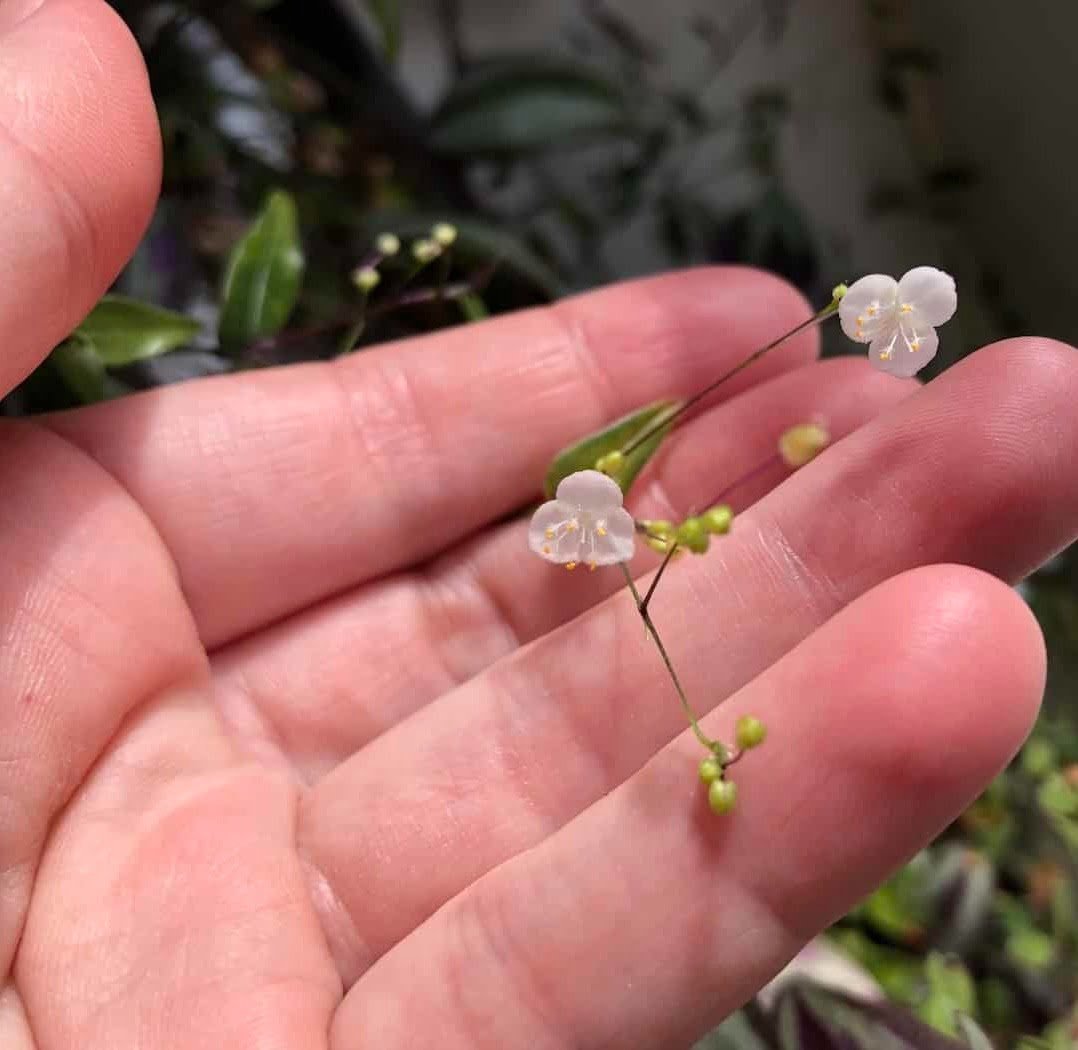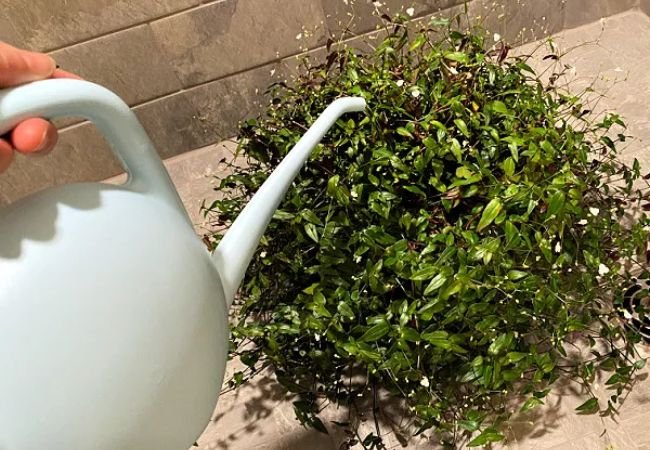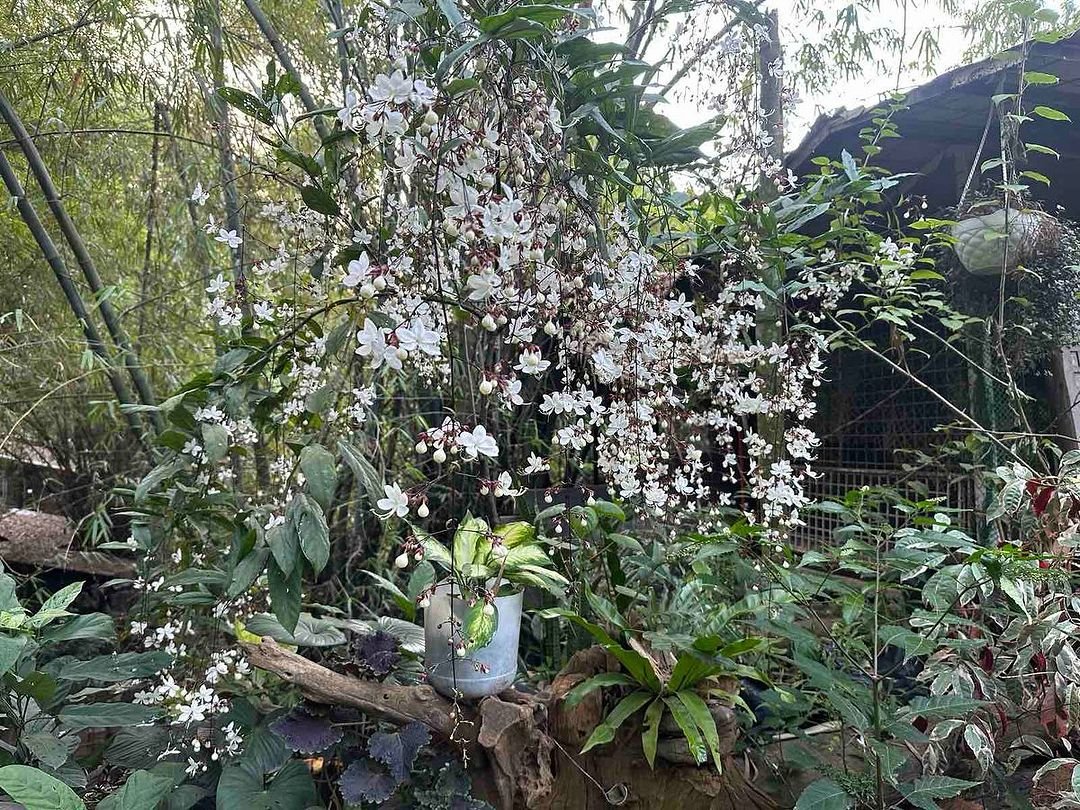Discover the beauty of the Bridal Veil Plant with our complete guide to growing and caring for this elegant, cascading plant. Learn essential tips for nurturing it indoors or outdoors for lush, delicate foliage year-round.
Bridal veil plant, also known as Tahitian bridal veil or wandering dude, is a trailing perennial herb that belongs to the spiderwort family (Commelinaceae). It is native to Mexico and Central America, but has been introduced to many other parts of the world, including Tahiti, where it gets its common name. Bridal veil plant is a popular houseplant because of its delicate and attractive appearance, as well as its easy care requirements. In this article, we will show you how to grow and care for bridal veil plant, and share some tips and tricks to make it thrive.
Here’s a detailed chart for the Bridal Veil Plant:
| Category | Information |
|---|---|
| Botanical Name | Gibasis pellucida |
| Common Name | Bridal Veil Plant |
| Plant Type | Perennial (often grown as an annual in cooler climates) |
| Hardiness Zone | 9-11 (can be grown indoors as a houseplant) |
| Sun Exposure | Bright, indirect light; tolerates partial shade |
| Soil Type | Well-drained, light, loamy soil |
| Watering | Moderate watering; allow the top inch of soil to dry out between waterings |
| Growth Habit | Trailing, cascading |
| Height/Spread | 12-18 inches tall; can spread up to 2 feet when cascading |
| Special Features | Delicate white flowers resembling a bridal veil; trailing stems make it ideal for hanging baskets or as a cascading ground cover; easy to grow indoors or outdoors |
What Does Bridal Veil Plant Look Like?

Bridal veil plant has very thin, delicate, dark green stems that can grow up to 18 feet long. The stems have small, pointed, dark green leaves with a purple underside. The leaves are arranged in groups of three, and are called cladodes. The plant produces masses of tiny white flowers that hang down from the stems, giving the plant an ethereal look reminiscent of a bridal veil. The flowers have three petals and are about a quarter of an inch across. They bloom throughout the year, but more profusely in spring and summer.
How to Choose a Pot and Soil for Bridal Veil Plant

Bridal veil plant can be grown in a variety of pots, but the most common and convenient option is a hanging basket. This allows the plant to cascade down and display its beauty. Choose a basket that is large enough to accommodate the plant’s growth, and has drainage holes at the bottom. You can also use a decorative pot with a saucer, or a terracotta pot with a tray, as long as you make sure the soil does not get waterlogged.
The soil for bridal veil plant should be well-drained, fertile, and slightly acidic. You can use a commercial potting mix for houseplants, or make your own by mixing equal parts of peat moss, perlite, and compost. You can also add some sand or vermiculite to improve drainage and aeration. Avoid using soil that is too heavy, compacted, or alkaline, as this can cause root rot and nutrient deficiencies.
How to Water and Fertilize Bridal Veil Plant

Bridal veil plant likes to be kept moist, but not soggy. Water the plant thoroughly when the top inch of the soil feels dry to the touch, and let the excess water drain out. Do not let the soil dry out completely, as this can cause the plant to wilt and drop its leaves and flowers. On the other hand, do not overwater the plant, as this can lead to root rot and fungal diseases. To prevent this, make sure the pot has good drainage, and empty the saucer or tray after watering.
Bridal veil plant is not very demanding when it comes to fertilization, but it can benefit from some extra nutrients during its active growth period. You can feed the plant once a month from spring to fall, using a balanced liquid fertilizer diluted to half the recommended strength.
Follow the instructions on the label, and avoid applying fertilizer to dry soil, as this can burn the roots. You can also use organic fertilizers, such as compost tea, fish emulsion, or worm castings, to enrich the soil and boost the plant’s health. Do not fertilize the plant in winter, when it is dormant.
How to Prune and Propagate Bridal Veil Plant

Bridal veil plant is a fast-growing plant that can quickly become leggy and unruly. To keep it in shape and encourage bushier growth, you can prune the plant regularly. You can trim off any dead, damaged, or diseased stems and leaves, as well as any stems that are too long or tangled. You can also pinch off the tips of the stems to promote branching. You can prune the plant anytime, but the best time is in late winter or early spring, before the new growth starts.
Bridal veil plant is very easy to propagate, as it can root from stem cuttings. You can take cuttings from the healthy stems that you pruned, or from any stems that you want to remove. Cut the stems into sections of about 4 to 6 inches long, and remove the lower leaves.
You can then insert the cuttings into moist soil, or place them in a jar of water. Keep the cuttings in a warm and bright location, and change the water every few days. The cuttings should root within a few weeks, and then you can transplant them into pots or baskets. You can also propagate bridal veil plant by division, by separating the root ball into smaller sections and replanting them.
How to Provide the Right Light and Temperature for Bridal Veil Plant
Bridal veil plant needs bright, indirect light to grow well and produce flowers. It can tolerate some direct sun in the morning or evening, but not in the afternoon, when the sun is too harsh and can scorch the leaves. You can place the plant near a window that faces east, west, or south, or under a skylight or a fluorescent light. Avoid placing the plant in a dark or shady spot, as this can cause the plant to become leggy and lose its color and flowers.
Bridal veil plant prefers warm and humid conditions, similar to its native habitat. It can grow in temperatures between 55 to 70 F (12 to 21 C), but it cannot tolerate frost or freezing temperatures. If you live in a cold climate, you should bring the plant indoors before the first frost, and keep it away from drafts, heaters, and air conditioners. You can also mist the plant regularly, or place it on a tray of pebbles and water, to increase the humidity around it. You can also use a humidifier or a terrarium to create a more humid environment for the plant.
How to Deal with Pests and Diseases of Bridal Veil Plant
Bridal veil plant is generally healthy and resistant to most pests and diseases, but it can sometimes be affected by some common problems. Some of the pests that can attack bridal veil plant are spider mites, mealybugs, aphids, and scale insects. These are small, sap-sucking insects that can cause the plant to become weak, yellow, and distorted. You can prevent and control these pests by keeping the plant clean and healthy, and by inspecting it regularly for any signs of infestation.
You can also spray the plant with a stream of water, or wipe the leaves with a cotton swab dipped in alcohol, to dislodge and kill the pests. You can also use insecticidal soap, neem oil, or horticultural oil, to treat the plant, following the directions on the label.
Some of the diseases that can affect bridal veil plant are root rot, leaf spot, and powdery mildew. These are fungal diseases that can cause the plant to wilt, rot, drop its leaves and flowers, and develop spots or patches on the leaves. You can prevent and control these diseases by avoiding overwatering and overcrowding the plant, and by providing good drainage, air circulation, and light.
You can also remove and dispose of any infected parts of the plant, and sterilize the tools and pots before using them. You can also use fungicides, such as copper or sulfur, to treat the plant, following the directions on the label.
How to Enjoy the Beauty of Bridal Veil Plant

Bridal veil plant is a beautiful and versatile plant that can be grown in various ways and places. You can grow it as a houseplant, in a hanging basket, on a trellis, or as a ground cover. You can also use it as a cut flower, as it can last for a long time in a vase. You can also enjoy the fragrance of the flowers, which is sweet and pleasant. Bridal veil plant is also a great plant to give as a gift, especially for weddings, anniversaries, or other special occasions. It is a symbol of love, purity, and happiness, and can bring joy and beauty to any home.
Bridal veil plant is a wonderful plant to have in your garden or home. It is easy to grow and care for, and it rewards you with its graceful and lovely appearance. By following the tips and tricks in this article, you can make your bridal veil plant thrive and bloom. We hope you enjoyed this guide and learned something new about this amazing plant. Happy gardening!
Pingback: How to Grow and Care for Ledebouria, the Silver Squill Plant
Pingback: Beauty of Panicle Hydrangeas: A Comprehensive Guide -
Pingback: 14 Rare Indoor Plants that Look Like Hair Strands
Pingback: Houseplant Pest Control: A Comprehensive Guide